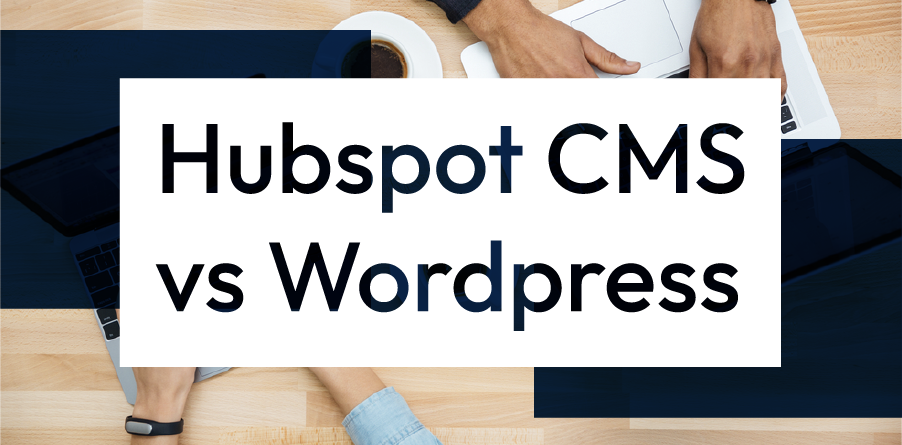How to Post on Social Media in 2024
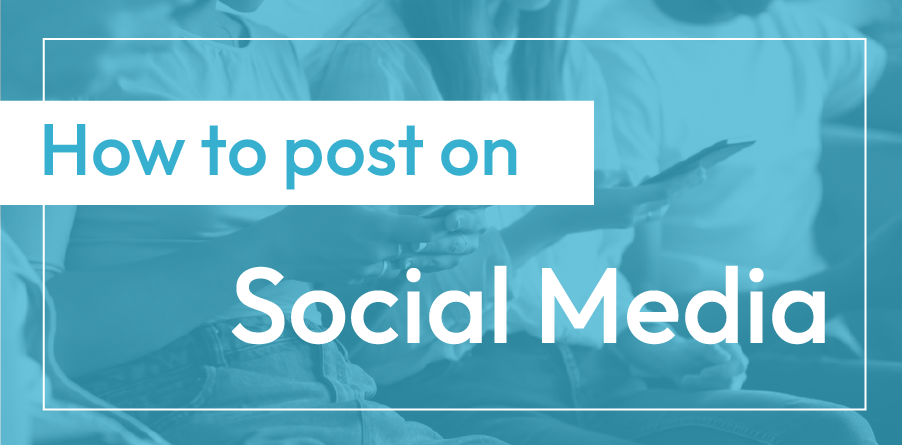
Now boasting over half of the worldwide population, social media is undoubtably one of the most prevalent tools for marketers today. Every social media platform has a prominent demographic, allowing marketers to reach their target audience via strategically published posts on optimal platforms.
Understanding HOW to post on social media is imperative to utilizing these marketing channels.
Here, we answer three crucial questions:
- What is the best time to post on social media?
- How often should I post on social media?
- What social media platforms should I use for my business?
Within each question, we explore seven popular social media platforms for businesses individually: Facebook, YouTube, LinkedIn, Instagram, TikTok, Twitter, and Pinterest.
The Best Time to Post on Social Media?
The “best” time to post on social media is an age-old debate, and while we’re adding best practice answers to the mix, ultimately YOUR user data will best answer the question for your target audience.
If you are just getting started on social media, this guide is a great place to start!
As the current undefeated champion of social media platforms, Facebook receives consistent engagement around the clock. However, research shows that there are prime times to post.
- The best days to post: Tuesday, Wednesday, and Friday
- Best times to post: between 9 AM and 1 PM
- Worst day to post: Saturday
SproutSocial created a helpful heatmap to demonstrate global Facebook engagement.

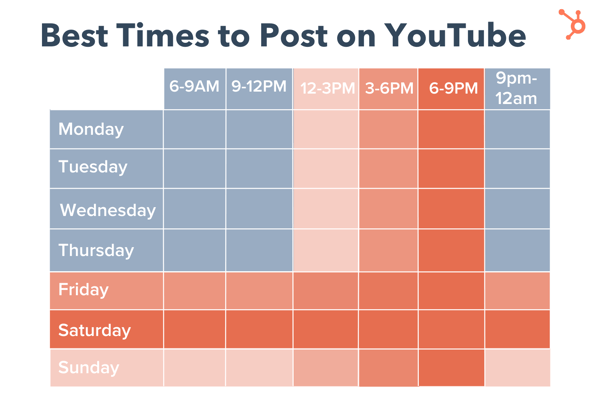
YouTube
- The best days to post: Friday, Saturday, and Sunday
- Best times to post: 6-9 PM, 3-6PM, and 12-3PM, in order of popularity
- Worst days to post: Monday, followed by Tuesday and Wednesday
HubSpot created a heatmap based on the research; Saturday is the clear winner.
- The best days to post: Tuesday, Wednesday, and Thursday
- Best times to post: between 8AM and 1 PM
- Worst days to post: Saturday and Sunday
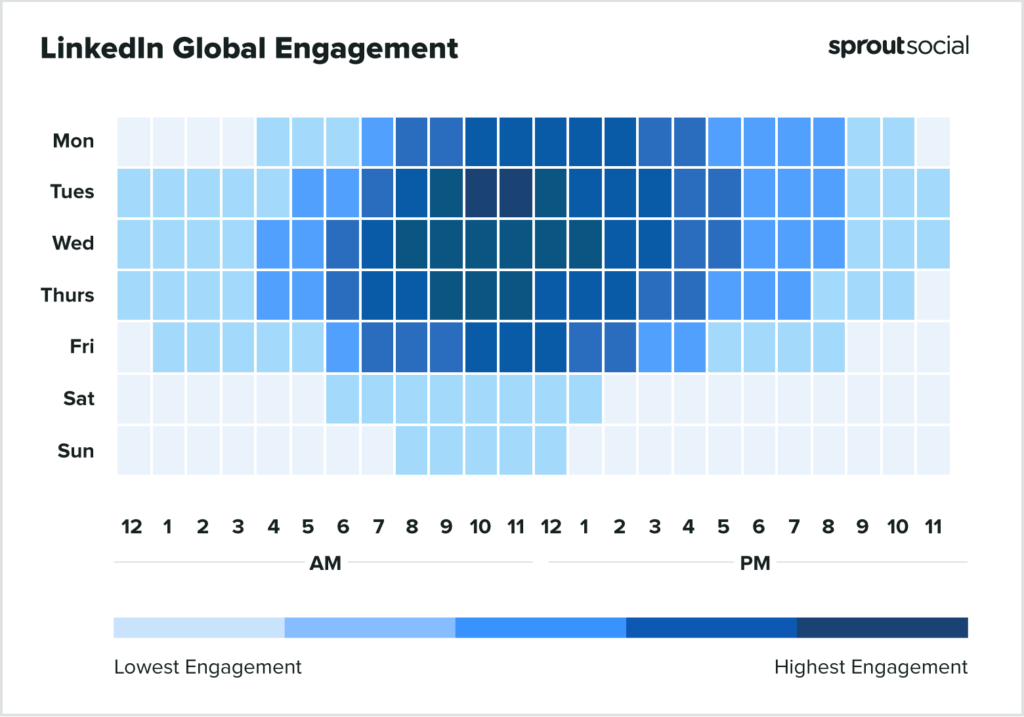
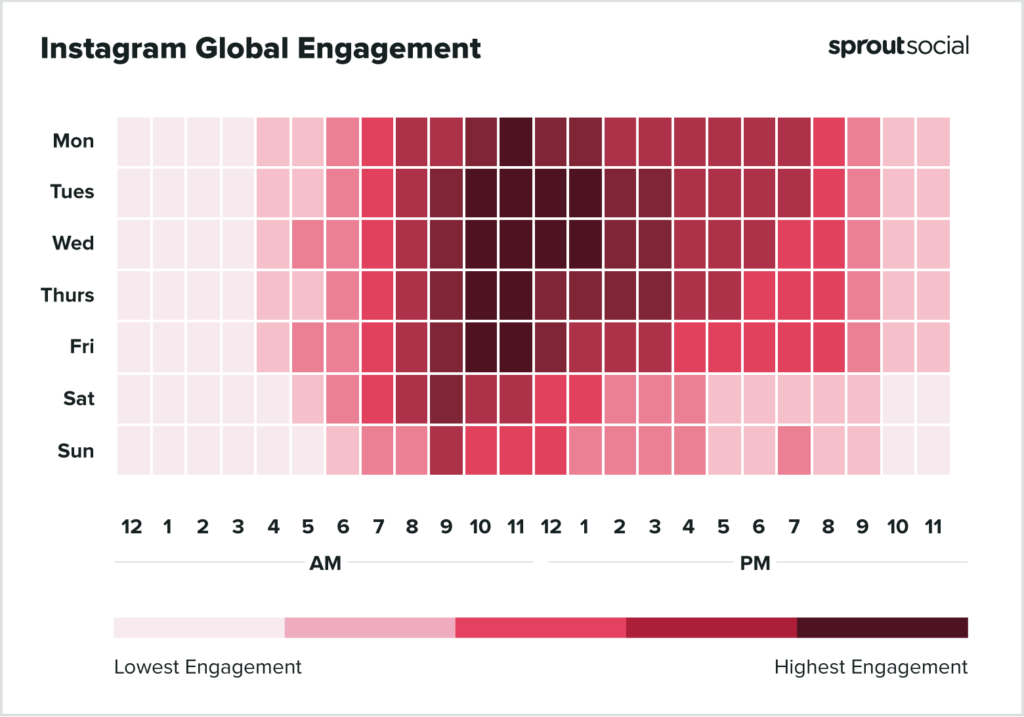
Like Facebook, Instagram offers fairly consistent engagement throughout the week, but there are clear priority timeslots.
- The best days/ times to post: Monday at 11 AM, Tuesday and Wednesday from 10 AM to 1 PM, and Thursday and Friday from at 10 and 11 AM.
- Worst days to post: Sunday and Saturday
TikTok
- The best days to post: Tuesday, Wednesday, and Thursday
- Best times to post: between 1 PM and 3 PM
- Worst days to post: Saturday and Sunday
While there are general best days/ times to post, the platform is largely niche-driven. Over time, your own user data will reveal optimal slots when YOUR target audience is active.
- The best days to post: Tuesday and Wednesday
- Best time to post: 9 AM
- Worst day to post: Sunday
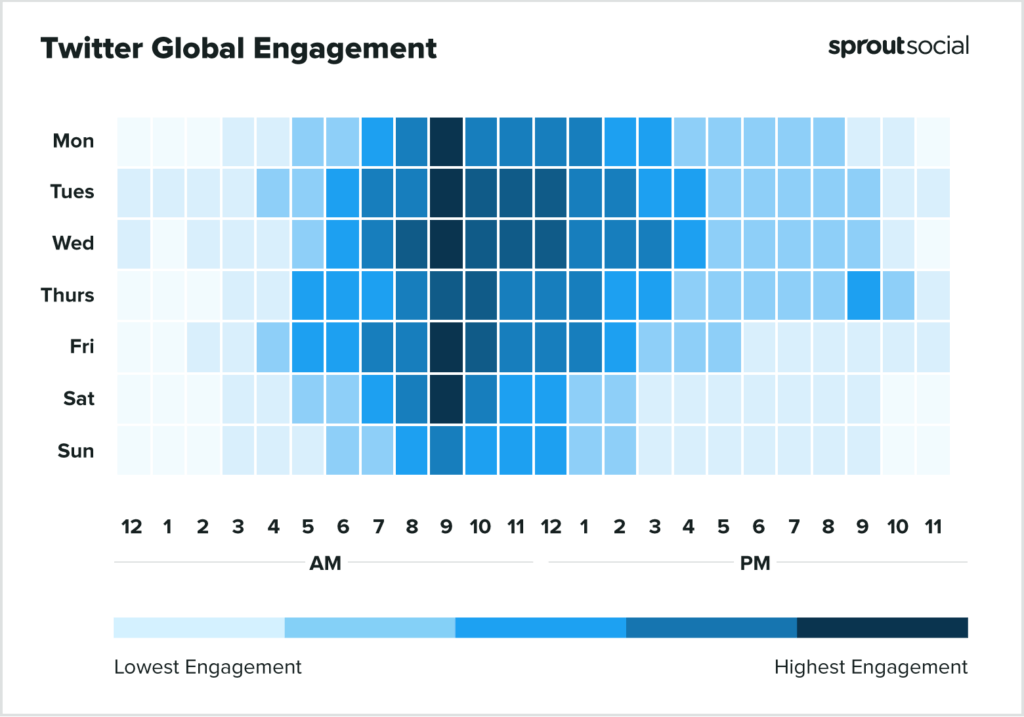
- The best day to post: Saturday (B2C); Monday (B2B)
- Best times to post: between 6 PM and 9 PM, and 3 PM
Social media marketing for businesses.
When you work with RivalMind, you gain a team of experts with the best tools and technology at their fingertips. Our social media marketing strategy is proven to expand reach, create and build stronger customer relationships, and increase brand awareness.
How Often Should I Post on Social Media?
It depends! Posting frequency depends on your target demographic, your business goals, and your user data. However, there are some general guidelines to follow, especially if you’re just getting started on social media and are still collection YOUR user data.
We should note: the numbers below are industry averages/ recommendations, and they might look overwhelming. Ultimately, consistency is most important. Decide on a posting frequency you can manage, and stick with it.
-
4-5 times/day
Organic reach continues dropping on the Facebook platform, so take advantage of Facebook ads and boosted posts to improve performance and get in front of your target audience. Like many social algorithms, post engagement is a major component of Facebook Feed visibility, so create posts that your audience likes to interact with.
YouTube
-
1 time/week
Try to post around the same time and day of the week so your subscribers know what to expect, helping view counts and subscriber counts better align.
-
1 time/day (max)
LinkedIn recently made an algorithm change to filter out posts considered spam and highlight posts with engagement, so take care to create high-quality posts that speak to your target audience. To improve engagement, encourage employees to share brand content, post questions, and respond to post interactions.
-
1-2 times/day
Post engaging content that resonates with your target audience. Take advantage of Instagram Reels, carousels, and video posts to promote engagement.
TikTok
-
1-4 times/day
TikTok recommends users post 1-4 times per day, spaced out appropriately, to remain “top of feed” and top of mind. Test popular sounds, hashtags, topics, and themes for optimal engagement.
-
3-4 times/day
The lifespan of a tweet is remarkably short, just 18 minutes. Posting more frequently helps your tweets receive more time in front of your target market.
-
1 time/day (max)
Make your post count by creating attractive visuals, staying on-top of trends, and using opportune keywords.
Where are your social media strengths, gaps, and opportunities?
We can tell you, and it’s free.
What Platforms Should I Use for My Business?
In an attempt to reach a widespread audience, marketers often feel pressured to use EVERY social media platform. However, spreading yourself thin makes consistent posting difficult. Unless your company has a large content team with the capability to create original content for every platform, it is best to pick one or two social platforms and master these first.
How do you choose which platforms to start on? Here’s what you need to know about demographics on the top seven social platforms.

Facebook has about 2 billion daily active users — nearly a quarter of the world population. A majority of users check their accounts daily and many use Messenger for communication.
The gender split for Facebook users is roughly equal, with 45% of women and 46% of men choosing to follow their friends and family members.
As the oldest of the major social media platforms — Facebook launched in 2004 and opened to the public in 2006 — it's not surprising that the demographics skew older. While around half of 13 to 17-year-olds have accounts, 81% of those 18 to 29 and 78% of those 30 to 49 have accounts, as well as 41% of adults 65 and older — a logical turn as Facebook's rise to prominence came with the coming of age of the Millennial generation.
Teen usage appears to be dropping, however, indicating that Facebook's reign, at least with the younger crowd, is likely coming to an end.
Facebook's best quality is possibly its ubiquitous appeal. Users can post anything, from photos to pictures to text.
Facebook is currently largest social media platform with the widest reach, making it easy to contact just about anyone in one fell swoop. Videos, live videos, blog posts, and other forms of curated content succeed best, particularly when posts appear to be a natural part of a user's news feed.
For those who post videos on Facebook, it's best to upload videos directly to Facebook rather than using a YouTube link; a YouTube link looks like any other link, while a Facebook video will play automatically as users scroll past.
The Live feature isn't as popular on Facebook as it is on Instagram, but can still be an effective way of sharing in-the-moment content. New Paragraph
YouTube
As the world’s second most visited website and second-most used social platform, YouTube is an excellent channel for organizations with the capability to produce video.
YouTube has 2.6 billion monthly active users, spending about 18 minutes per day on the platform. Nearly 40% of Millennials are binge-watching YouTube daily. The largest populations of YouTube users are 18-25 year-olds, closely followed by 30-49 year-olds. Globally, YouTube is 53.9% male and 46.1% female.


Considered the professional social media site, LinkedIn is a fantastic way to connect B2B companies and individuals for networking and employment. LinkedIn boasts 875 million registered users worldwide, roughly split between male (52%) and female (48%) users.
Catered towards professionals looking for industry growth and connections, LinkedIn is most popular among those aged 25-34 (58.4%). In the U.S., 40% of internet users aged 46-55 use LinkedIn. The platform is used most by college graduates with high household income. 50% of users have at least an undergraduate degree; only 9% hold just a high school diploma.
LinkedIn is a professional platform, so professional content is most successful. Video, infographics, blog posts, and industry news excel.
Unlike Facebook, which allows for posts of all kinds, Instagram is specific to photos and videos with a minimal focus on text.
The site has 2 billion monthly active users, the majority of whom are between 18-24 and 25-34. Many users check the app multiple times a day. Instagram is split 48.4% female and 51.8% male.
As a visual platform, Instagram caters toward images, videos, live posts, and Reels. Any image won't succeed, however; aesthetic is important on Instagram. While this may feel limiting, brands that can find a creative way to spin their content can be very successful.

TikTok

TikTok has exploded in growth and widespread usage since its conception, dominated by a young user base spending a lot of time on the platform daily. TikTok is conforming to the advertising needs of brands and influencers jumping onto the platform.
TikTok boasts about 1 billion monthly active users, spending an average of almost 90 minutes on the platform. The largest age group is 10-19, followed by 20-29, split 61% female and 39% male.
Twitter, which launched in 2006, is a wildly popular social media site that caters to 330 million active users. Unlike other social media platforms, Twitter has a strict character limit: posts, which can contain images and videos, can only accommodate a max of 280 characters, including spaces. This format lends itself to short thoughts and quips rather than long-form content or thoughtful posts of more than a few sentences. Unlike most other U.S.- based social media sites, 79% of Twitter users do not reside in the United States.
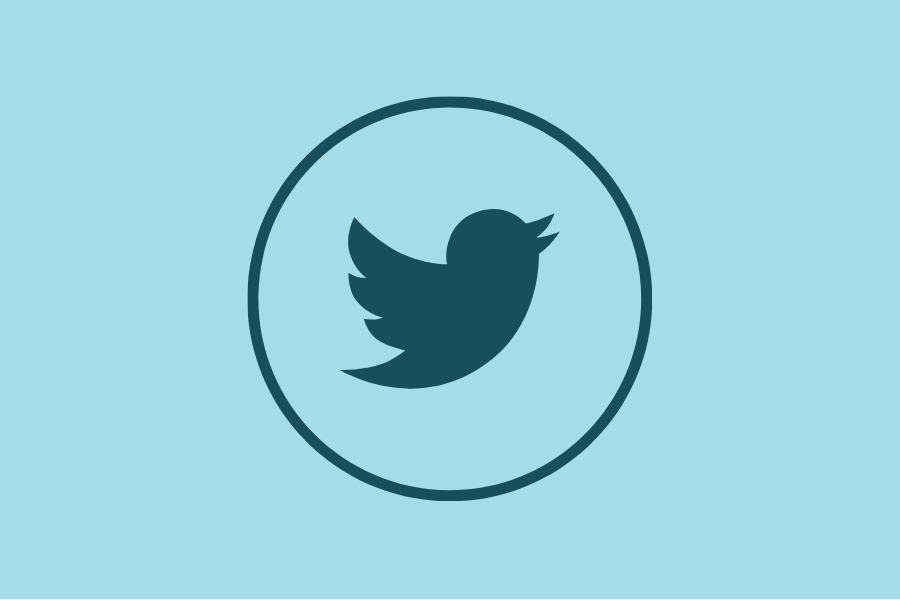
Compared to Facebook and Instagram, Twitter's market is comparatively small. However, it is very popular in political circles and serves 40% of those between the ages of 18 and 29, as well as 32% of those 13 to 17 and 27% of those 30 to 40. Twitter is not a popular platform for seniors; only 8% of those over the age of 65 utilize the site. 42% of adults who do use Twitter check the site daily, ensuring that most users see their feeds on a regular basis and are likely to notice promoted posts.
Twitter is best for circulating information that already exists in other forms, like posting links to blog posts and news articles, sharing funny ideas, jokes, or gifs, and posting images and video content. Due to size limitations on posts, information must be brief. Some companies, like Wendy's and Merriam-Webster, have allowed these caps to work for them, using Twitter as a way to incite humor.
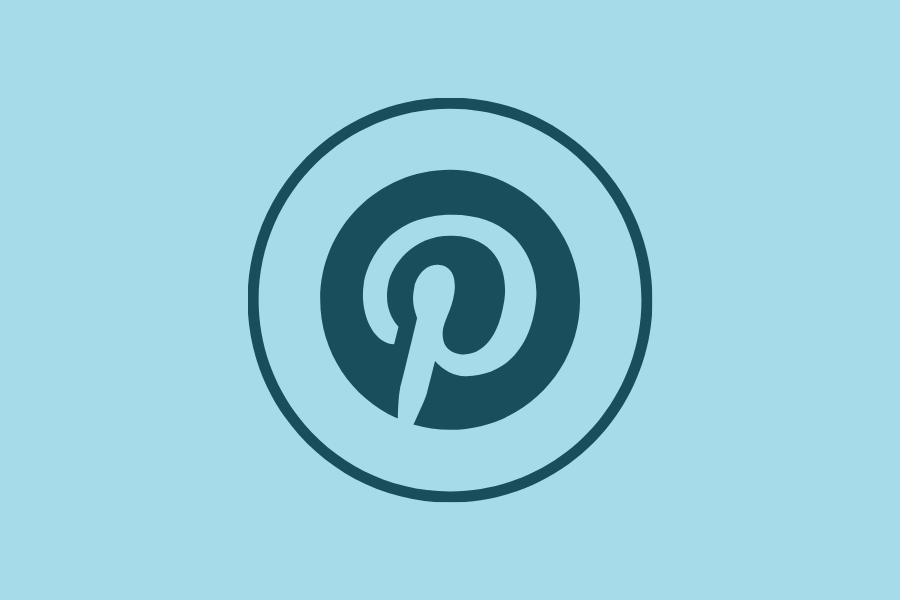
A virtual bulletin board of sorts, Pinterest is the smallest of the major social media platforms, with 431 million active users. The site skews heavily female; 76.7% of women and just 15.3% of men make use of the features. Much like Twitter, a majority of users do not live within the U.S.
Due to the nature of the site — sharing images to public or private bulletin boards based on topic or theme — it's popular for those who are planning weddings or collecting ideas.
Like Instagram, Pinterest is a visual platform. Long-form content will not succeed here; instead, post attractive, intriguing images that inspire saving and sharing. Infographics, innovative and/ or unique products, and step-by-step instructions – like hair or beauty tutorials – receive the most engagement.
Pinterest is effective for ecommerce. 93% of Pinners have used Pinterest to make or plan a purchase, and over 50% have seen something on Pinterest then made an online purchase.
A few additional variables
You understand the breakdown, but how do you make a choice?
There's no copy-and-paste strategy. The platform(s) you choose will depend on your unique brand, goals, message, and target demographic.
When analyzing your options, keep these kinds of questions in mind:
- How old is your key market? Is your product for teens and preteens, or is your business focused on older adults? Is there a gender breakdown in who may use your services?
- What is the nature of your product or service? Can it be showcased best with text, images, or video?
- What is your budget for promoted or sponsored posts? Is it adequate for advertisements across platforms?
- Is your market local or national? If local, choose a platform that allows for specific audience targeting.
- Do you have user personas that can be matched to social media audiences?
- Do you sell products that can be showcased in aesthetic photo/ video ads or services that may need text descriptions?
How your business operates and how you are best positioned to market yourself will impact how you approach marketing. For example, a hip clothing brand may see more progress on Snapchat, Instagram, and Pinterest than Facebook and Pinterest. On the other hand, RivalMind finds success on LinkedIn primarily, because our target market lives here.
Ultimately, YOUR marketing team is best positioned to evaluate the available statistics and find success on perfect social media channels.
Need Help Crafting a Social Strategy?
At RivalMind, we craft holistic digital strategies, centered around your primary goals. Our search marketing and social media teams work in tandem to craft powerful marketing plans that corroborate efforts and drive results.
To talk to a member of our team, give us a call at 331.228.9636 or complete our online contact form.

Meet the Author
Jessica Goodrum
Director of Creative Services
Jessica Goodrum is a digital marketer with over a decade of experience in digital project management. As Director of Creative Services at RivalMind, she is responsible for the success of website design and development projects, as well as social media client growth. Her approach to management – both projects and staff – is “transparency.” She consistently outlines project objectives and the steps to get there, assessing how RivalMind can improve upon every client’s experience.
Specialties: Duda Web Development, Keeping It All On Task
Looking for more organic website traffic?
Welcome to RivalMind. Our purpose is to help your business thrive. We are a digital marketing agency that offers SEO, PPC, Web Design, Social Media and Video Solutions as tools to our clients for online business development and growth.
Contact us today to get started!
Blog Contact Form
We will get back to you as soon as possible.
Please try again later.



